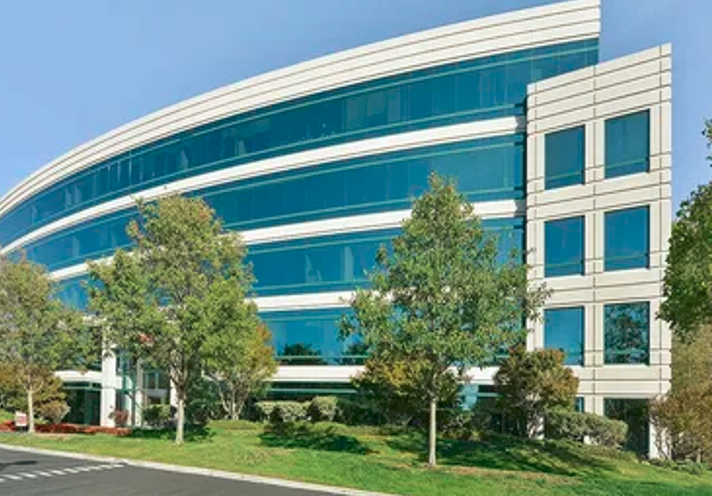
Attention all architecture enthusiasts and history buffs! Get ready to dive deep into the captivating world of iconic Western buildings and the secrets they hold. Today, we are thrilled to unveil the intriguing details behind one of the most controversial lawsuits in architectural history – The Great Western Buildings Lawsuit. Join us as we peel back layers of mystery, scandal, and awe-inspiring design that have remained hidden for decades. Get your magnifying glasses ready because this blog post is about to take you on a thrilling journey through time, uncovering secrets that will leave you in awe. Brace yourselves for an unforgettable exploration into the unknown depths of structural masterpieces – it’s time to reveal what lies beneath these towering facades!
Introduction to the Great Western Buildings Lawsuit:
The Great Western Buildings Lawsuit is a highly controversial and complex legal case that has garnered widespread attention in recent years. It involves numerous parties, including the Great Western Buildings company, various government agencies, and multiple individual plaintiffs.
At its core, this lawsuit centers around allegations of fraud and misrepresentation on the part of Great Western Buildings (GWB), a prominent construction company known for its high-end commercial and residential developments. The case was first brought to light by a group of homeowners who discovered significant structural defects in their newly constructed homes.
After further investigation, it was revealed that GWB had cut corners during the construction process, using subpar materials and ignoring building codes and safety regulations. This led to severe consequences for the affected homeowners, including unsafe living conditions and massive financial losses due to necessary repairs.
As more victims came forward with similar complaints against GWB’s projects, it became clear that this was not an isolated incident but rather a pattern of negligence by the company. As a result, several class-action lawsuits were filed against GWB on behalf of all those impacted by their shoddy construction practices.
The scope of this lawsuit is vast, involving multiple states across the country where GWB has built properties. It also includes allegations of fraudulent business practices such as false advertising and misleading sales tactics used by GWB to entice buyers into purchasing their properties.
However, what makes this case even more intriguing is the involvement of government agencies such as building code enforcement
Background and history of Great Western Buildings
The Great Western Buildings, also known as the “GW Buildings,” have a rich and fascinating history that has recently come to light due to a lawsuit filed against its current owners. These buildings, located in downtown New York City, have been a prominent landmark since their construction in the late 1800s.
Originally built as commercial offices for the Great Western Railway Company, these buildings were designed by renowned architect George B. Post and completed in 1891. The company was one of the largest railway corporations at the time, with lines spanning across Canada and parts of the United States.
The Great Western Buildings quickly became an important hub for businesses, housing numerous tenants including law firms, insurance companies, and shipping agencies. Its prime location near shipping ports and major transportation hubs made it a desirable location for companies looking to establish themselves in New York City.
However, as time went on, the Great Western Railway Company faced financial difficulties and eventually declared bankruptcy in 1915. This led to a change in ownership of the buildings multiple times over the next few decades.
In 1953, real estate businessman Paul Milstein acquired the GW Buildings and began renovations to modernize them while still preserving their historic charm. This included updating elevators and adding air conditioning systems. The renovations were completed in 1957 and brought new life into these once-grand structures.
For several decades following its renovation, the GW Buildings continued to thrive as one of New York’s premier office spaces. However, in recent years there have been
Details of the Lawsuit: What went wrong?
The Great Western Buildings lawsuit has been making headlines for months, captivating the attention of the public and sparking intense debates among legal experts. But what exactly went wrong in this high-profile case? In this section, we will delve into the details of the lawsuit and uncover the series of events that led to its shocking outcome.
It all started when a group of residents living in the Great Western Buildings filed a class-action lawsuit against their landlord, accusing them of gross negligence and violation of building codes. The plaintiffs claimed that their apartments were riddled with safety hazards, including faulty wiring, mold infestations, and broken elevators. They also alleged that their landlord had failed to properly maintain the building and address these issues despite numerous complaints from tenants.
As more details emerged during the course of the trial, it became evident that there was a long history of neglect on the part of the landlord. Inspections by city officials revealed multiple violations dating back several years, yet no action was taken to rectify them. This raised questions about possible corruption or lack of oversight within local government agencies responsible for ensuring building safety.
Furthermore, it was uncovered that not only were basic maintenance and repairs neglected but also major structural problems were ignored. The plaintiffs presented evidence showing extensive water damage to walls and ceilings due to leaking pipes which had caused serious cracks in the foundation. This put not only residents at risk but also passersby on sidewalks below.
The defense argued that they were unaware of these issues as they had entrusted a property management
Parties Involved in the Lawsuit
In any legal case, there are always multiple parties involved, each with their own interests and perspectives. The Great Western Buildings lawsuit is no exception, as it involves a complex web of individuals, companies, and organizations.
At the center of the lawsuit are two main parties: the plaintiffs and the defendants. The plaintiffs in this case are a group of homeowners who purchased units in the Great Western Buildings development. They claim that they were misled about the quality and safety of the buildings by the developer, resulting in numerous issues such as structural defects and water damage.
On the other side, we have the defendants – which include the developer of Great Western Buildings, as well as various contractors and subcontractors involved in its construction. These entities deny any wrongdoing and argue that any issues with the buildings were due to factors beyond their control.
Apart from these main parties, there are also several other individuals or groups who play important roles in this lawsuit. One such group is made up of expert witnesses – professionals with specialized knowledge or experience relevant to this case. These experts may be called upon to provide opinions on matters such as building codes, construction standards, or engineering principles.
Another key player is the insurance company for both sides. In cases like this involving property damage or personal injury claims, insurance coverage can greatly impact how things unfold. Insurers will often have legal teams working on behalf of their clients to protect their interests and minimize potential payouts.
The court system itself also plays a significant role in this lawsuit. Judges will pres
Impact and Consequences of the Lawsuit
The Great Western Buildings lawsuit has not only captured the attention of the media and the public, but it has also had a significant impact on both parties involved and the wider community. In this section, we will delve into the various consequences of this high-profile legal battle and its potential long-term implications.
1. Financial Impact:
One of the most evident consequences of the lawsuit is its financial impact. The cost of litigation can be exorbitant, especially in cases involving large corporations like Great Western Buildings. Both parties have already spent millions on legal fees, expert witnesses, and other related expenses. This could potentially result in a substantial financial burden for both companies, affecting their future operations and growth plans.
Additionally, if Great Western Buildings is found liable for any wrongdoing, they may have to pay hefty damages to Goliath Industries. This could severely affect their profitability and market standing.
2. Damage to Reputation:
The negative publicity surrounding the lawsuit has undoubtedly taken a toll on both companies’ reputation. For Goliath Industries, being associated with such a scandal could harm their brand image and erode consumer trust. On the other hand, even though Great Western Buildings vehemently denies any wrongdoing, their name has been dragged through the mud in multiple news outlets as well as social media platforms.
Furthermore, potential customers may hesitate to do business with either company due to concerns about their integrity or credibility. It could also lead to employee morale issues within both organizations.
Lessons Learned from the Great Western Buildings Lawsuit
The Great Western Buildings lawsuit, also known as the Great Western Bank Building scandal, was a high-profile case that shook the real estate industry in the mid-2000s. It involved prominent figures and companies in the construction and finance sectors and resulted in millions of dollars in losses for investors. In this section, we will delve into some of the key lessons learned from this infamous lawsuit.
1. Due Diligence is Crucial
One of the primary lessons learned from this case is the importance of conducting thorough due diligence before investing in any project or property. Many investors were drawn to the promise of high returns without thoroughly researching the project or its developers. As a result, they suffered significant financial losses when things went awry.
To avoid such situations, it is crucial to conduct a comprehensive assessment of all aspects related to an investment opportunity – including financial records, legal history, market conditions, and developer track record. This due diligence process can help identify potential risks and ensure that investors make informed decisions.
2. Transparency is Key
Another lesson learned from this lawsuit is the critical role transparency plays in building trust between stakeholders in a construction project. During investigations, it was revealed that some developers had been less than transparent about their financial dealings and had misled investors by presenting false information.
Transparency allows for open communication between all parties involved and helps prevent misunderstandings or misrepresentations that can lead to legal disputes later on. Developers should be upfront about
Conclusion: The Future of Great Western Buildings
The lawsuit surrounding the Great Western Buildings has brought to light many intriguing details and raised important questions about the future of these iconic structures. While the legal battle may have ended, the impact of this case will be felt for years to come.
One of the major concerns is what will happen to the Great Western Buildings now that they are under new ownership? The new owners have stated their intention to preserve and restore these historic buildings, but there are still doubts about whether they have the resources and expertise to do so. Many fear that without proper care and maintenance, these buildings could fall into disrepair and lose their historical significance.
Furthermore, with the rise of modern architecture and development, there is a growing pressure to tear down old buildings in favor of newer, more profitable ones. This raises questions about whether or not these grand structures will be able to withstand such pressures in the future.
In addition, there is also a concern about how this lawsuit will affect other historic buildings across the country. Will it set a precedent for similar cases? Will it make it more difficult for preservationists to protect other historic sites? These are all valid concerns that need to be carefully considered moving forward.
On a positive note, this lawsuit has also sparked conversations about the importance of preserving our architectural heritage. It has brought attention to just how valuable these buildings are not only as physical structures but also as symbols of our past. It serves as a reminder that we must work towards finding a balance





